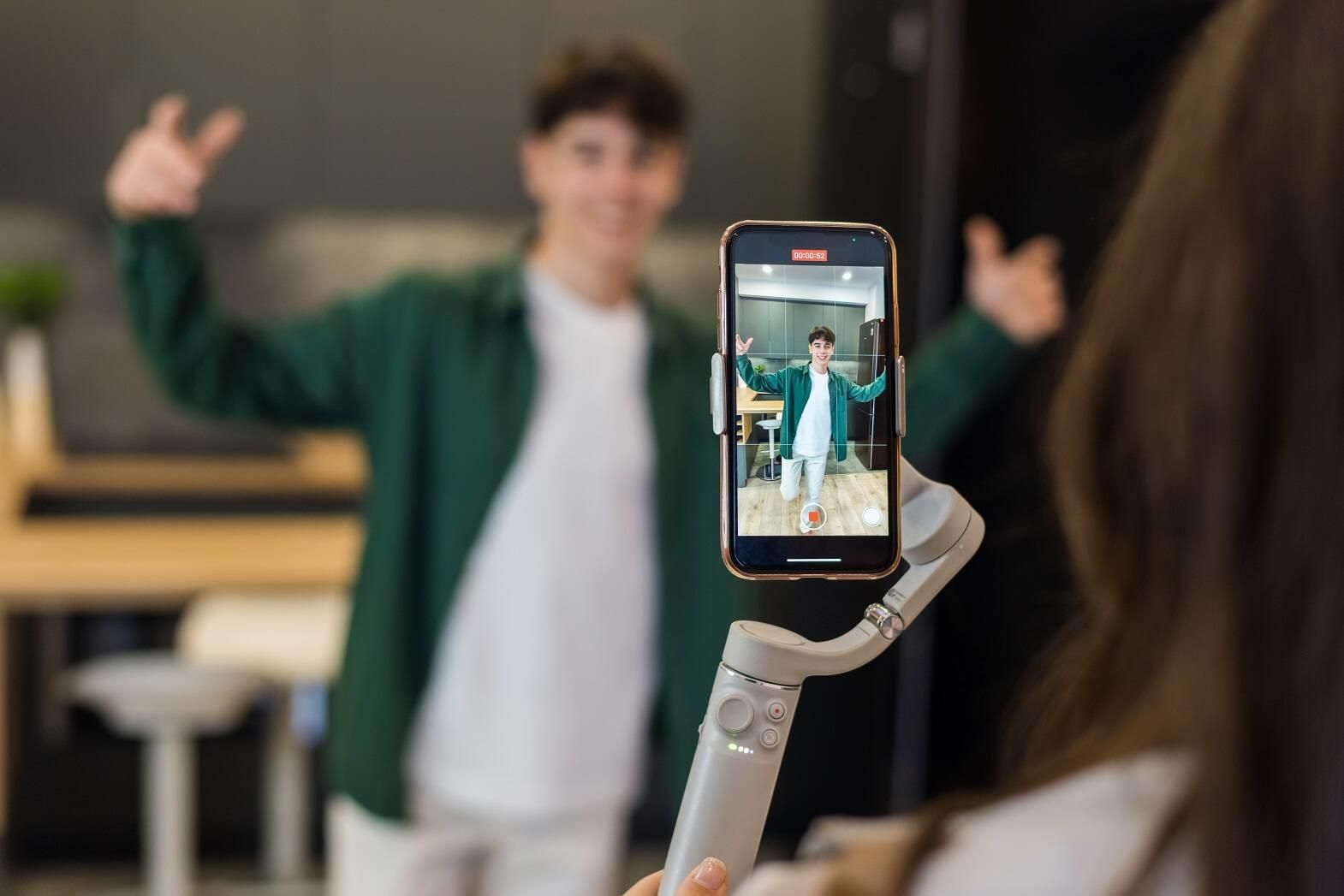Beginning in the 1960s, fashion shows transformed into true spectacles for photographers and industry insiders. By this time, the market’s standards had been well established. Buyers and forecasters would attend these showcases to gauge the trends that designers earmarked for the upcoming year. This information, gleaned from the most prestigious runway shows in Paris, London, Milan, and New York, enabled larger retailers—especially department stores—to curate their collections. Magazines played a pivotal role in broadcasting these must-have trends to the general populace.
Today, the pace of trend prediction has accelerated significantly. The ubiquity of technology, from social media to the live streaming of collections, has made the fashion industry more accessible and, consequently, transformed the dissemination of fashion trends across society. Modern-day trendsetters range from celebrities caught on the street, to youthful Instagram influencers, to fashion bloggers with loyal followings, and, of course, to the designers themselves. Therefore, trend forecasting now demands a more considerable effort than ever before, requiring forecasters to be both creative and rapidly responsive in their approach.
With the advancement of artificial intelligence (AI) over the past decade, forecasting agencies are increasingly turning to the quantitative analyses provided by machine learning (ML) for guidance. These AI tools are capable of sifting through vast databases containing images from runway shows, social media posts, search engine results, and data on online and in-store purchases. By identifying patterns within this wealth of information, forecasters can pinpoint emerging trends with greater accuracy and, most critically, greater speed.
How Social Media Impacts Fashion Trends?
In today’s fast-paced world, consumers undoubtedly play a more significant role in determining which trends catch on or fade away. The fleeting nature of trends is both a cause and a consequence of consumer consumption rates, which are at an all-time high. Consumers react just as enthusiastically to celebrities’ fashion choices on social media and in public as they do to official fashion events.
The way brands engage with consumers on social media platforms also shapes their success. The direct line that social media provides to the consumer has an immediate impact on trend trajectories. Consequently, interactions between brands and their customers on these platforms have become integral to the process of accurately forecasting market trends.
On Instagram alone, each day sees the sharing of over 1 billion stories and 1.3 billion photos1. Social media users take note when both influencers and everyday users showcase their latest handbags or shoes, offering brands both free and paid exposure. For instance, Chanel has been recognised as the most influential luxury brand on social media, boasting more Instagram followers than any other luxury label. Brands are now actively marketing themselves and cultivating followings on Instagram, with some digitally native companies even creating entire ecosystems on social media, moving away from traditional physical stores.
However, Instagram is not the sole driving force behind change in the fashion industry. Weibo, Pinterest, TikTok, and YouTube are also gaining significant ground as millennials and Generation Z individuals become influencers and consumers in their own right. The industry has shifted from being exclusive to inclusive, with consumers frequently combining social media and fashion to express their preferences.
For brands, sifting through the deluge of data from various social media channels to determine what is relevant, what is not, and what has staying power can be daunting. Brands must be adept at anticipating trends, a task that requires robust tools to decipher the vast quantities of data available. This is where AI can play a pivotal role, aiding brands to navigate and interpret the complexities of social media-driven trend forecasting.
How can AI Play an Important Role in Trend Forecasting?
In the realm of fashion, AI is creating significant waves. The conventional methods of identifying trends through trade shows, historical sales data, and fashion weeks are now largely considered outdated. Consumer preferences are evolving at a pace that matches the rapid production of new products and collections, a velocity unprecedented in the fashion industry.
Before the rise of social media, trends typically emerged from either a top-down or bottom-up approach. A top-down cycle commences when designers choose a particular colour, fabric, or style as the cornerstone of a collection. If it gains popularity, it leads to the development of a trend, cascading through other designers, department stores, and eventually reaching a wider population, where it then becomes commonplace.
On the other hand, a bottom-up cycle sees trends originating from the general public. For example, blue jeans were originally worn only by working men but eventually became staples in the collections of nearly all major fashion houses.
Social media has revolutionised these cycles, providing a platform for the rapid emergence of new trends and fostering more niche trends. In the digital age, trends cycle through society much faster than in previous decades, posing challenges for consumers and businesses to quickly assimilate them.
The penchant for showcasing personal style on social media has resulted in a vast, labelled database as users tag their photos with hashtags, geotags, and timestamps. The integration of AI and ML technologies into these databases has made it easier than ever to identify trends on both macro and micro scales.
AI plays a role in several fashion-centric processes, including supply chain management, inventory control, and personalised search functionalities. However, it is the application of ML algorithms in trend prediction and AI-based demand forecasting that are deemed the most revolutionary. These technologies not only predict future trends but also anticipate consumer demand, thus driving the industry forward with unprecedented precision and speed.
How Can AI Aid in Product Innovation and Development?
Mass-market fashion retailers and creative directors at high-end brands can now use generative AI to analyse a variety of unstructured data in real-time, instead of relying solely on trend reports and market analysis to inform their designs for the upcoming season’s collections. For example, generative AI can quickly compile and conduct sentiment analysis on social media videos or model patterns from numerous sources of consumer data.
Generative AI enables creative directors and their teams to input sketches and desired details, such as fabrics, colour palettes, and patterns, into a platform that then automatically generates a vast array of design options. This allows designers to explore a wide diversity of styles and aesthetics. Based on these outputs, a team can develop new products, infusing each piece with the unique signature of the fashion house. This opens up the possibility of producing distinctive, limited-edition product drops, which may include brand collaborations. Even products like eyewear could be personalised for individual customers using face-recognition technology powered by generative AI, which scans facial topography to accommodate size and style preferences.
In December 2022, a group of fashion designers from the Laboratory for Artificial Intelligence in Design2 (AiDLab) in Hong Kong showcased a fashion show featuring designs supported by generative AI. Fashion designers are already harnessing the power of generative AI using tools from tech companies like Cala, Designovel, and Fashable. These tools help to generate new ideas, experiment with various design iterations without the need to produce costly prototypes, and significantly accelerate design workflows.
How AI can Help in Making Fashion Industry Sustainable?
The clothing industry is frequently cited as one of the major polluters and a significant contributor to global warming. Many have witnessed landfills brimming with discarded apparel or unsold stock. Unsustainable components of clothing that end up in landfills, as well as industrial waste discharged into water bodies, are partly to blame for the environmental issues.
Surprisingly, the fashion industry contributes more to annual global carbon emissions than all international flights and maritime shipping combined, accounting for over 10 per cent3. Moreover, the greenhouse gas emissions associated with the fashion sector are expected to surge by more than 50 per cent by 2030.
In such a scenario, accurate trend forecasting can reduce waste, save costs, and provide companies with a competitive edge. By minimising the risk of inaccurate predictions, the application of AI in forecasting can contribute to making the fashion industry more sustainable. AI algorithms can help analyse vast datasets to effectively predict demand for various fashion items, identify emerging trends, and discern consumer preferences. This enables businesses to streamline production and manage inventory more efficiently, thereby reducing excess output and the surplus stock that often ends up as waste.
AI can also suggest new upcycling and recycling methods, aiding in the repurposing of used clothing or textile waste. By adopting circular economy principles, AI can facilitate a more sustainable fashion sector. By analysing data on product returns, consumer behaviour, and recycling opportunities, algorithms can identify chances for repair, reuse, or recycling. This enables fashion businesses to create closed-loop systems that repurpose materials, thereby reducing waste and promoting sustainability.
The impetus for adopting AI forecasting tools is evident: the more precise the predictions, the less likely a company is to expend resources on producing garments that nobody purchases. However, it is crucial to remember that AI itself has environmental impacts that must be considered.
How AI Plays an Important Role in Different Fashion Operations?
AI has substantially increased its footprint in the fashion industry, offering numerous applications and use cases that enhance different aspects through the use of data analysis, image recognition, natural language processing, and machine learning. Here are some key applications of AI in fashion:
Trend Forecasting and Buying: AI is pivotal in trend forecasting within the fashion industry. It analyses various data sources like social media, past sales, and fashion blogs to predict upcoming trends. These insights help fashion brands curate their upcoming collections to reflect both established and nascent fashion trends.
Merchandising and Analysis: AI optimises merchandising by aiding in assortment planning and inventory management. By analysing sales data, historical trends, and customer preferences, AI systems help brands select the right products in the right quantities for store placement, enhancing industry profitability by reducing surplus inventory and avoiding stockouts.
AI’s influence extends beyond these areas, touching on personalised customer experiences, automated customer service, and even design aspects where it assists in creating patterns and models that align with identified trends. The adoption of AI in the fashion sector streamlines operations, provides actionable insights, and drives innovation, ensuring that brands remain competitive in a fast-paced industry.
Is AI Usage for Predicting Fashion Trends Here to Stay?
Forecasting techniques are crucial across most industries for determining the quantities and types of products to produce each year. Typically, these forecasts are based on historical sales data, with adjustments for seasonality, value propositions, and other factors.
In the fashion industry, however, forecasting can be especially challenging. This is because intangible factors such as emotions and aesthetics often have a significant influence on fashion trends, far more so than in industries like automotive tyre sales where such nuances are less impactful.
AI-powered tools such as EDITED and WGSN are currently making headway in accurately predicting trends by analysing vast amounts of data from diverse sources, including e-commerce sites, social media, and fashion shows. These advanced methods of data analysis offer a robust solution to the unique challenges of fashion trend forecasting.
Moreover, programmes like Pantone’s Coloro and Google’s Project Muze utilise ML algorithms to sift through colour trends and patterns, providing designers with a competitive edge in the fast-paced fashion industry.
With AI’s capacity to parse and predict based on large datasets, and considering the volatile nature of fashion trends influenced by a myriad of subtle factors, AI usage in predicting fashion trends seems poised to be an enduring facet of the industry.
Ending Note
Trend forecasting offers a significant advantage to all fashion firms, not just global powerhouses, because some systems extend their analysis to multiple locations, taking into account regional and cultural variations. For brands operating on an international scale or those aspiring to do so, it is essential to recognise these differences.
Advanced AI empowers brands to forecast demand and trends with greater accuracy, manufacture in a more sustainable manner, and secure an unparalleled competitive edge. AI achieves this by converting real-world images shared on social media into valuable data, providing a wealth of insights for the industry.















Comments